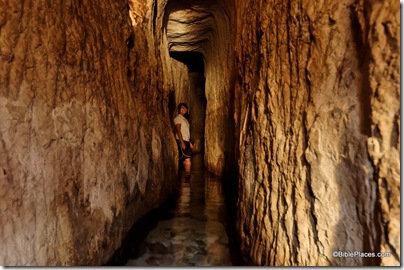The Sept/Oct 2008 issue of Biblical Archaeology Review carried an intriguing article that suggested that workers used sound signals from above in determining direction while carving Hezekiah’s Tunnel. The apparent “consensus” theory that they followed a natural crack always seemed implausible to me, and thus I am interested in learning of other possibilities.
A number of readers sent questions about the article and one of the scientists of the study responds in an online-only article. Questions that he answers include:
- How does Hezekiah’s Tunnel compare with the water tunnels of Megiddo and Hazor?
- How could sound signals pinpoint direction through more than 100 feet of bedrock?
- Did water flow uphill from the Gihon Spring to the Pool of Siloam?
- How were the workers supplied with oxygen?
- Isn’t there really a natural crack that the workers followed?
Ayreh Shimron has some good insights into these and other matters.
